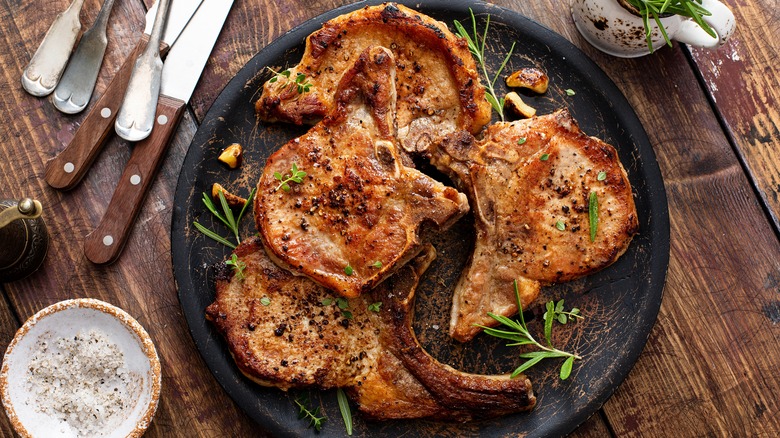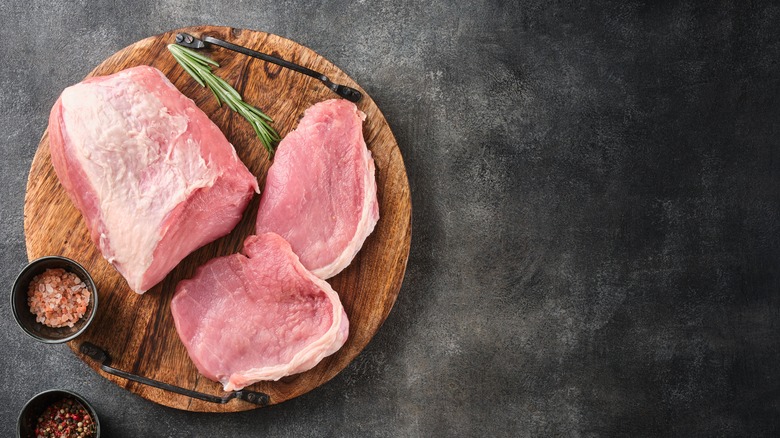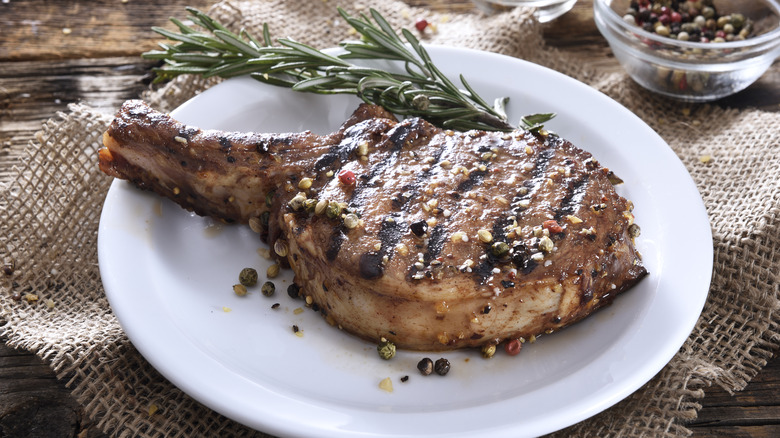The Simple Trick To Prevent Pork Chops From Curling
Whether you pair them with roasted vegetables or make them into Chicago-style sandwiches, pork chops are a delectable and versatile protein option. But if you've ever cooked them, you might have encountered the frustrating issue of pork chops curling as they cook. Fortunately, there's a straightforward trick to prevent this and ensure a perfectly cooked, flat chop every time.
Like most cuts of meat, pork chops contain a combination of muscle fibers and fat. The muscle fibers contract when exposed to heat, while the fat melts and shrinks. These natural reactions cause the meat to curl inward, creating the familiar "cupping" effect. A curled chop is difficult to handle in the pan, and uneven cooking due to curling will leave your chop overdone on one side and undercooked on the other. The key to preventing pork chops from curling is to make small cuts along the edge of the fat cap.
Make the cuts for a flat pork chop
Begin with fresh, bone-in pork chops. Boneless pork chops are more prone to curling, while bone-in chops tend to remain flatter during cooking. Examine the fat cap on the edge of the pork chop. Using a sharp knife, make small, shallow cuts about an inch apart along the fat cap. These cuts should go through the fat but not into the meat. This method allows the fat to contract and pull the meat evenly, preventing the chop from curling.
Season the pork chop with salt, pepper, and other desired herbs and spices. Since pork chops are not a particularly flavorful cut of meat, you should be generous with your seasonings. Alternatively, you can give the pork chops a quick brine. Mix your seasonings, then coat your pork chops with the brine. Place the chops on a wire rack and refrigerate them for at least half an hour. Wipe off the brine when you are ready to cook the chop. Place the pork chop fat side down in the pan first. This helps render the fat and further prevents curling.
Additional pork chop cooking tips
Aside from making small cuts to the pork chop to make them flat for the pan, here are more tips that will improve your pork chop. First, allow your pork chops to come to room temperature before cooking. If you cook the chops right out of the fridge, the surface will overcook by the time the inside reaches the right temperature.
While pork should be thoroughly cooked before eating, overcooking can cause pork chops to curl as they lose moisture — even if you brine them beforehand. Use a meat thermometer to ensure you cook your chops to the recommended safe internal temperature of 145 degrees Fahrenheit as recommended by the U.S. Department of Agriculture.
After removing your perfectly cooked chops from the pan, let them rest for a few minutes. This allows the juices to redistribute and results in a much juicier and more delicious chop.



